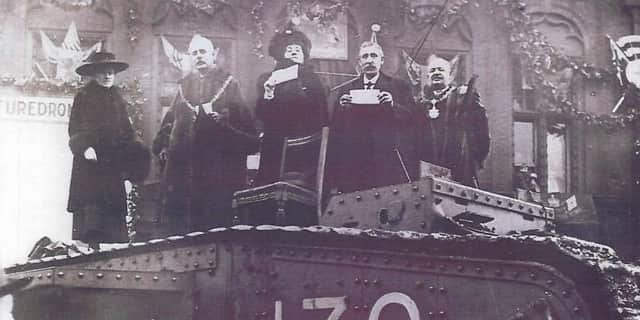You won't believe how much Hartlepool raised for the First World War effort


The “County Borough of Hartlepool” raised £13,644,415 for the war effort in the 4½ years between September 1914 and April 1919, the most per head of anywhere in the United Kingdom, said Mark Simmons, the Curator (Museum Development) at Hartlepool Borough Council.
To put that amount into context, it’s £545million in today’s currency. Put simply, the people of Hartlepool were in a different league to the rest of the country.
Advertisement
Hide AdAdvertisement
Hide AdSo let’s take a further look – with the help of Mark – at how Hartlepool got behind the country.
* February 4 to February 8, 1918. “Tank Week” came to town and Hartlepool was up for it. This was a week where towns could raise money for the war effort.
More than £2.3million was raised in five days. That’s just over £37 per head of population.
Mark said: “That’s an amazing £104m in modern money (an average of £1625 from each person in the Borough).”
Advertisement
Hide AdAdvertisement
Hide Adl March 4 to March 9, 1918. Hartlepool was at it again. This time, it was Business Men’s Week and it raised £315,862 - enough to pay for two new destroyers for the Royal Navy.
l July 15 to July 20, 1918. War Weapons Week and the £584,309 raised in town bought two tanks - called l West Hartlepool I” and “West Hartlepool II”.
l November 11, 1918, was the first day of West Hartlepool’s “Feed the Guns” week. Early that day, troops and the public begin to gather in Church Square which was decorated with patriotic bunting.
But at 9.50am, a coded Naval radio signal from Northern Command in Newcastle is received by the radio operators at 68th Wing RAF Headquarters based at Seaton Carew. It is deciphered, and reads, “Following received from Admiralty Begins The Armistice is signed and hostilities to cease forthwith ends 0950”
Advertisement
Hide AdAdvertisement
Hide Ad10:20am : The news starts to spread across the Hartlepools. The crowds watching the arrival of the guns hear the news and amid the jubilation, the bells of Christ Church are rung.
The following five days fundraising raises £1,617,286 (that’s £31 per head, or £71million in modern money) despite the news that the Armistice is signed.
By April the following year, the National War Saving Committee award Egbert the Tank to West Hartlepool as winner of the fundraising contest.
Egbert arrived on April 29, 1919.